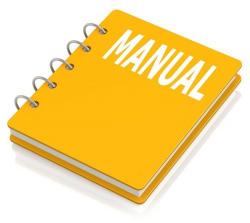Yamaha Outboards 1984-1996 Workshop Repair & Service Manual
Catalog:
Model:
Complete digital official shop manual contains service, maintenance, and troubleshooting information for the 1984-1996 Yamaha Outboard Engines. Diagnostic and repair procedures are covered in great detail to repair, maintain, rebuild, refurbish or restore your vehicle like a professional mechanic in local service/repair workshop. This cost-effective quality manual is 100% complete and intact as should be without any missing pages. It is the same factory shop manual used by dealers that guaranteed to be fully functional to save your precious time.
This manual for 1984-1996 Yamaha Outboard Engines is divided into different sections. Each section covers a specific component or system and, in addition to the standard service procedures, includes disassembling, inspecting, and assembling instructions. A table of contents is placed at the beginning of each section. Pages are easily found by category, and each page is expandable for great detail. It is in the cross-platform PDF document format so that it works like a charm on all kinds of devices. You do not need to be skilled with a computer to use the manual.
MAKE: Yamaha
YEAR: 1984 1985 1986 1987 1988 1989 1990 1991 1992 1993 1994 1995 1996
MODEL: Outboard Engines (V4/V6 Models, 2-Stroke & 4-Stroke, 2HP-250HP, 1-4 Cylinder)
SIZE: 228 MB (630 pages PDF)
Buy the best manual on the Internet from responsible merchant and get instant download without surprise.
INSTANT Delivery: A download link will be sent to you instantly after payment. Simply click on the link and save it to your computer. You can use this Manual as long as you wish with no restrictions.
PRINTABLE with Diagrams: Just print the manual out and start to work. You can also use the manual with your laptop in your garage.
Customer SATISFACTION: If there is any problem, just drop a quick email. Within hours the issue shall be taken care of.
REFUND Policy: We sell high quality products only. In case there is any problem with your purchase, a replacement link will be sent to you. If we are at fault, you get 100% refund.
The following listing contains all engines covered in this manual
2 hp, 1 cyl (43cc), 2-stroke ...................................... 1984-96
2 hp, 1 cyl (50cc), 2-stroke ...................................... 1995-96
3 hp, 1 cyl (70cc), 2-stroke ........................................ 1989
3 hp, 1 cyl (70cc), 2-stroke ...................................... 1990-96
4 hp, 1 cyl (83cc), 2-stroke ...................................... 1984-96
4 hp, 1 cyl (103cc), 2-stroke ....................................... 1996
5 hp, 1 cyl (103cc), 2-stroke ..................................... 1984-96
6 hp, 2 cyl (165cc), 2-stroke ..................................... 1986-96
8 hp, 2 cyl (165cc), 2-stroke ..................................... 1984-96
9.9 hp, 2 cyl (246cc), 2-stroke .................................... 1984-96
9.9 hp, 2 cyl (232cc), 4-stroke .................................... 1984-96
15 hp, 2 cyl (246cc), 2-stroke .................................... 1984-96
20 hp, 2 cyl (395cc), 2-stroke ....................................... 1996
20 hp, 2 cyl (430cc), 2-stroke ....................................... 1996
25 hp, 2 cyl (395cc), 2-stroke .................................... 1988-96
25 hp, 2 cyl (430cc), 2-stroke .................................... 1990-96
25 hp, 2 cyl (496cc), 2-stroke .................................... 1984-96
25 hp, 3 cyl (496cc), 2-stroke ....................................... 1996
28 Jet, 3 cyl (698cc), 2-stroke .................................... 1990-96
30 hp, 2 cyl (496cc), 2-stroke .................................... 1984-96
30 hp, 3 cyl (496cc), 2-stroke .................................... 1987-96
35 Jet, 3 cyl (698cc), 2-stroke .................................... 1987-96
40 hp, 2 cyl (592cc), 2-stroke .................................... 1989-96
40 hp, 3 cyl (698cc), 2-stroke .................................... 1984-96
45 hp, 4 cyl (935cc), 4-stroke ....................................... 1996
48 hp, 2 cyl (760cc), 2-stroke ....................................... 1996
50 hp, 3 cyl (698cc), 2-stroke .................................... 1984-96
50 hp, 3 cyl (849cc), 2-stroke .................................... 1994-96
50 hp, 4 cyl (935cc), 4-stroke .................................... 1995-96
55 hp, 2 cyl (760cc), 2-stroke .................................... 1989-95
60 hp, 3 cyl (849cc), 2-stroke .................................... 1991-96
65 Jet, 3 cyl (1140cc), 2-stroke ................................... 1987-96
70 hp, 3 cyl (849cc), 2-stroke .................................... 1984-96
75 hp, 3 cyl, (1140cc), 2-stroke ................................... 1994-96
80 hp, 3 cyl, (1140cc), 2-stroke ................................... 1994-96
80 Jet, V4 (1730cc), 2-stroke ..................................... 1987-96
85 hp, 3 cyl, (1140cc), 2-stroke ................................... 1989-96
90 hp, 3 cyl, (1140cc), 2-stroke ................................... 1984-96
105 Jet, V6 (2596cc), 2-stroke....................................... 1996
115 hp, V4 (1730cc), 2-stroke .................................... 1984-96
130 hp, V4 (1730cc), 2-stroke .................................... 1988-96
140 hp, V4 (1730cc), 2-stroke .................................... 1984-96
140 Jet, V6 (2596cc), 2-stroke .................................... 1987-95
150 hp, V6 (2596cc), 2-stroke .................................... 1984-96
175 hp, V6 (2596cc), 2-stroke .................................... 1984-96
200 hp, V6 (2596cc), 2-stroke .................................... 1984-96
220 hp, V6 (2596cc), 2-stroke .................................... 1984-87
225 hp, 76 deg. V6 (3130cc), 2-stroke ............................. 1994-96
225 hp, 90 deg. V6 (2596cc), 2-stroke ............................. 1987-96
250 hp, V6 (3130cc), 2-stroke .................................... 1990-96
EXCERPT:
Torque
Torque is defined as the measurement of resistance to turning or rotating. It tends to twist a body about an axis of rotation. A common example of this would be tightening a threaded retainer such as a nut, bolt or screw. Measuring torque is one of the most common ways to help assure that a threaded retainer has been properly fastened. When tightening a threaded fastener, torque is applied in three distinct areas, the head, the bearing surface and the clamp load. About 50 percent of the measured torque is used in overcoming bearing friction. This is the friction between the bearing surface of the bolt head, screw head or nut face and the base material or washer (the surface on which the fastener is rotating). Approximately 40 percent of the applied torque is used in overcoming thread friction. This leaves only about 10 percent of the applied torque to develop a useful clamp load (the force that holds a joint together). This means that friction can account for as much as 90 percent of the applied torque on a fastener.





